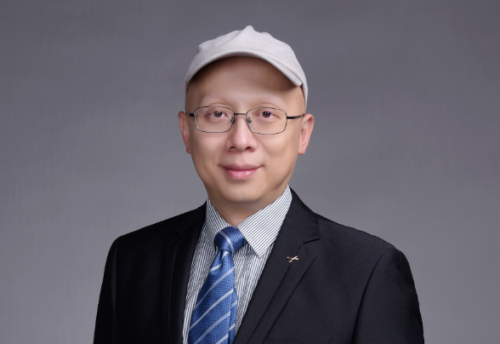Faculty
Professor Xingyu Jiang received his Bachelor's degree in Chemistry from the University of Chicago in 1999 and his Ph.D. from Harvard University in 2004. In 2005, he began an independent career at the National Center for Nanoscience and Technology (Chinese Academy of Sciences). In 2018, he was appointed as a Chair Professor at the Southern University of Science and Technology. Professor Xingyu Jiang was awarded the National Science Fund for Distinguished Young Scholars in 2010. He was an Innovative Talent Scholar by the Ministry of Science and Technology, and serves as a Chief Scientist of the National Key Research and Development Plan of the Ministry of Science and Technology. He received a Scientific Exploration Award from the Tencent Foundation. He was elected as a fellow of the Royal Society of Chemistry (UK) and American Society for Medical and Biological Engineering. He has published more than 400 papers, has over 200 invention patents. His main research areas include microfluidic chips and nanomedicine.
https://faculty.sustech.edu.cn/jiang/
Education
Postdoctoral Research, Harvard University (2004-2005)
Ph.D. in Chemistry, Harvard University (2004)
B.S. in Chemistry, the University of Chicago (1999).
Work experience
Southern University of Science and Technology, 2018-Present.
National Center for Nanoscience and Technology (Chinese Academy of Sciences), 2005-2018.
Research interests
Analytical Chemistry; Microfluidics; Nanomedicine.
Major Awards/Research Projects
Fellow of the American Institute for Medical and Biological Engineering, 2020.
Tencent "Science Exploration Award", 2019.
Chief Scientist, National Key Research and Development Program of the Ministry of Science and Technology, 2019.
Fellow of the Royal Society of Chemistry, 2016.
National Science Fund for Distinguished Young Scholars , 2010.
Young Investigator, Human Frontiers Science Foundation, 2007.
Representative paper
18. Tang, H.; Zhao, X.; Jiang, X. Chemically tailored anionic antibiotic adjuvants targeting divalent cations to overcome carbapenem resistance in gram-negative bacteria. Science Advances 2025 11,eadz0574
17. Li, Z.; Li, F.; Wang, Z.; Jiang, X. Unlocking Zeptomolar Single-Molecule Detection by Synergizing Digital Microfluidics and Digital CRISPR. Journal of the American Chemical Society 2025
16. Zhang, Y.; Liu, Y.; Miao, L.; Zhu, H.; Jiang, X.; Zhang, H.; Fan, C.; Liu, K., Liquid crystal-guided DNA information storage: Nondestructive recovery and long-term preservation. Science Advances 2025, 11 (39), eadu3957
15. Li, J.; Mao, C.; Wang, S.; Jiang, X. A compact cassette tape for DNA-based data storage. Science Advances 2025, 11 (37), eady3406
14. Chen, S.; Guo, Z.; Lu, B.; Jiang, X. A wearable device for continuous immunoassay-based monitoring of C-peptide in interstitial fluid. Science Advances 2025, 11 (29), eadw2182
13. Qi, J.; Xie, C.; Chen, M.; Hang, C.; Zhang, L.; Jiang, X. Precision-Controlled Sequential Drug Release via Electrochemical Corrosion of Liquid Metal Nanoparticles. Science Advances 2025, 11, eadw6986.
12. Zhang, J.; Chai, F.; Li, J.; Wang, S.; Zhang, S.; Li, F.; Liang, A.; Luo, A.; Wang, D.; Jiang, X. Weakly Ionized Gold Nanoparticles Amplify Immunoassays for Ultrasensitive Point-of-Care Sensors. Science Advances 2024, 10, eadn5698.
11. Wu, Y.; Cheng, J.; Qi, J.; Hang, C.; Dong, R.; Low, B. C.; Yu, H.; Jiang, X. Three-Dimensional Liquid Metal-Based Neuro-Interfaces for Human Hippocampal Organoids. Nature Communications 2024, 15, 4047.
10. Yang, S.; Cheng, J.; Shang, J.; Hang, C.; Qi, J.; Zhong, L.; Rao, Q.; He, L.; Liu, C.; Ding, L.; Zhang, M.; Chakrabarty, S.; Jiang, X. Stretchable Surface Electromyography Electrode Array Patch for Tendon Location and Muscle Injury Prevention. Nature Communications 2023, 14, 6494
9. Liu, Y.; Yang, Y.; Wang, G.; Wang, D.; Shao, P.-L.; Tang, J.; He, T.; Zheng, J.; Hu, R.; Liu, Y.; Xu, Z.; Niu, D.; Lv J.; Yang J.; Xiao H.; Wu S.; He S.; Tang Z.; Liu, Y.; Tang, M.; Jiang, X.; Yuan, J.; Dai, H.; Zhang, B. Multiplexed Discrimination of SARS-CoV-2 Variants via Plasmonic-Enhanced Fluorescence in a Portable and Automated Device. Nature Biomedical Engineering 2023, 7, 1636-1648.
8. Jia, Y.; Chen, W.; Tang, R.; Zhang, J.; Liu, X.; Dong, R.; Hu, F.; Jiang, X. Multi-Armed Antibiotics for Gram-Positive Bacteria. Cell Host & Microbe 2023, 31, 1101-1110.
7. Tang, L.; Shang, J.; Jiang, X. Multilayered Electronic Transfer Tattoo That Can Enable the Crease Amplification Effect. Science Advances 2021, 7, eabe3778.
6. Cheng, S.; Hang, C.; Ding, L.; Jia, L.; Tang, L.; Mou, L.; Qi, J.; Dong, R.; Zheng, W.; Zhang, Y.; Jiang, X. Electronic Blood Vessel. Matter 2020, 3, 1664-1684.
5. Wang, P.; Zhang, L.; Zheng, W.; Cong, L.; Guo, Z.; Xie, Y.; Wang, L.; Tang, R.; Feng, Q.; Hamada, Y.; Gonda, K.; Hu, Z.; Wu, X.; Jiang, X. Thermo‐triggered Release of CRISPR‐Cas9 System by Lipid‐encapsulated Gold Nanoparticles for Tumor Therapy. Angewandte Chemie International Edition 2018, 57, 1491-1496.
4. Yang, M.; Zhang, W.; Yang, J.; Hu, B.; Cao, F.; Zheng, W.; Chen, Y.; Jiang, X. Skiving Stacked Sheets of Paper into Test Paper for Rapid and Multiplexed Assay. Science Advances 2017, 3, eaao4862.
3. Lei, Y.; Tang, L.; Xie, Y.; Xianyu, Y.; Zhang, L.; Wang, P.; Hamada, Y.; Jiang, K.; Zheng, W.; Jiang, X. Gold Nanoclusters-Assisted Delivery of NGF siRNA for Effective Treatment of Pancreatic Cancer. Nature Communications 2017, 8, 15130.
2. Cheng, S.; Jin, Y.; Wang, N.; Cao, F.; Zhang, W.; Bai, W.; Zheng, W.; Jiang, X. Self‐adjusting, Polymeric Multilayered Roll That Can Keep the Shapes of the Blood Vessel Scaffolds during Biodegradation. Advanced Materials 2017, 29, 1700171.
1. Chen, Y.; Xianyu, Y.; Jiang, X. Surface Modification of Gold Nanoparticles with Small Molecules for Biochemical Analysis. Accounts of Chemical Research 2017, 50, 310-319.



